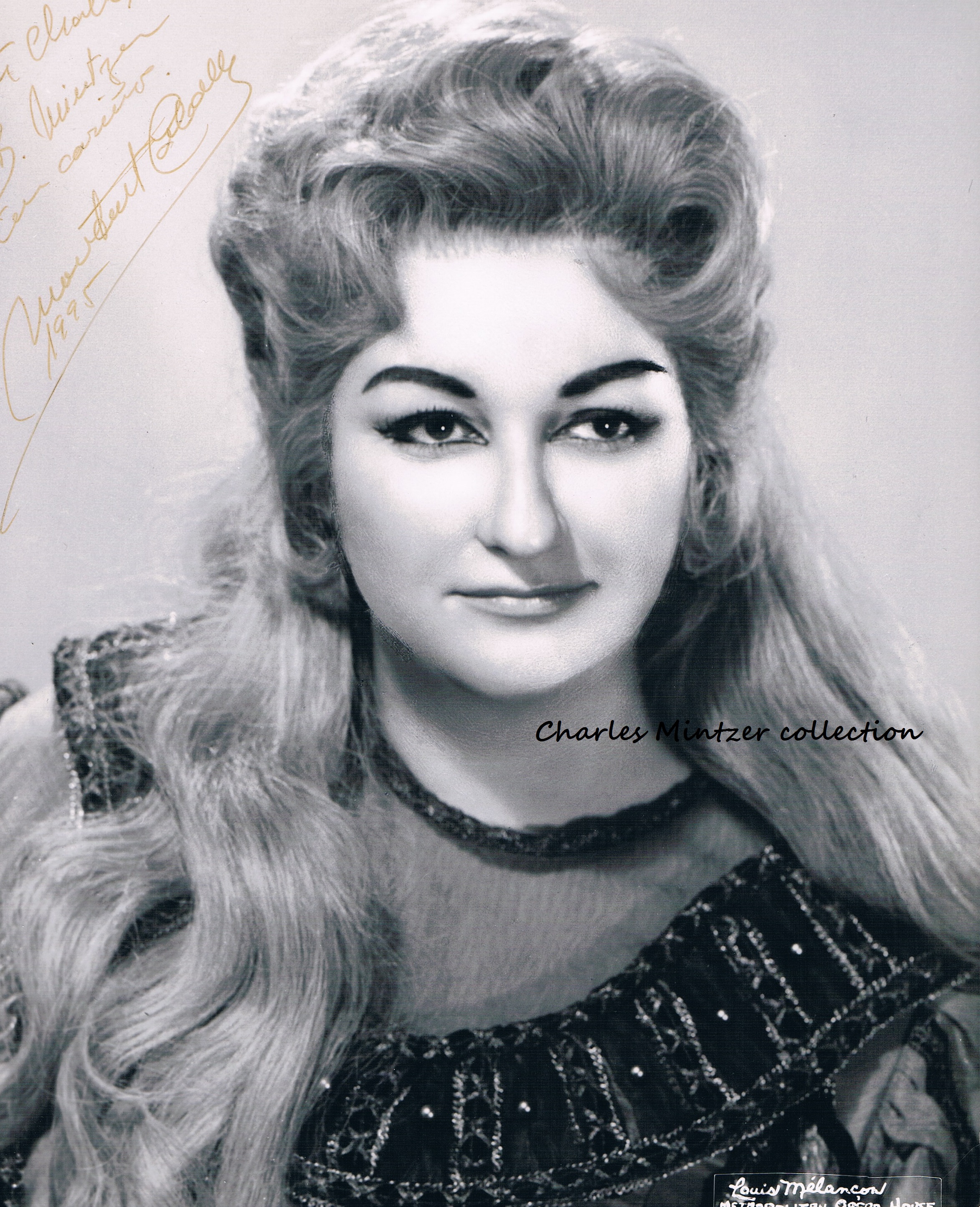MONTSERRAT CABALLE (1933-2018) IN MEMORIAM
My Montserrat Caballé story, by Charles Mintzer

In April 1965 Marilyn Horne, who been announced for “Lucrezia Borgia” in a concert performance with the American Opera Society, withdrew due to pregnancy, and her replacement was to be an unknown Spanish soprano, Montserrat Caballé (she was then unknown in the USA, pre-internet and YouTube).
A dear friend of mine offered me a ticket (part of a pair) that his partner’s Viennese landlady had offered him as rare Donizetti was not of interest to her. Hilda Bondi (quite elderly at that time) was her name and she was no slouch as an opera enthusiast as she herself studied years earlier with Lilli Lehmann in Berlin. My friend’s partner was out-of-town but as a piano student at Juilliard, he had rented a room in her apartment and became friends. A side note: my friend brought Ms. Bondi years earlier to my modest Brooklyn apartment to listen to some 78rmp recordings as I had samples of many of great singers she had heard. I introduced her to some of my favorites and played a Conchita Supervia Rossini aria; and she opined that Supervia would be laughed off the stage in Vienna with her wide vibrato. At that time only collectors of old records knew Supervia; she had not been re-introduced to the current public. That’s how it was in those days. Now, most knowledgeable opera lovers know her.
Two days before the “Lucrezia” my friend called me that he had to take back my ticket as Ms. Bondi had told him that her friend, a Mr. Schirmer, the Met score librarian, had been to the dress rehearsal and told her that this new soprano was a “sensation in the making;” that she was a cross of Maria Callas and Victoria de los Angeles. That was quite a statement. Ms. Bondi wanted one of the tickets back.
An hour before the performance I went to the Carnegie Hall box office, but all they had left were $10.00 tickets, but $10.00 dollars was a lot of money in those days for a young civil servant, so I waited in the lobby for possibly obtaining a “return” or a cheaper ticket. While in the lobby Ms. Bondi was there talking in German with several other women, in those days there were many German-Jewish refugees living in New York and attending cultural events. She waved me over and introduced me to her friends as a collector who had a fantastic record collection. One of the ladies was Friedelind Wagner(click here), in whose face you could see Richard Wagner and Franz Liszt. Friedelind asked me where I was sitting and I replied that I was still scrounging around for a seat. She told me that when they opened the doors thirty minutes before the start of the performance I should go around the corner of Carnegie Hall and stand at the Seventh Avenue exit doors. At the appointed time Friedelind Wagner opened one of the exit doors, ushered me in and I found a seat in the back of the orchestra.




The performance was the stuff of legend. In the entrance aria the first notes were of an incredible beauty and grabbed you instantly, that this was a very beautiful and unusual voice. When she sang her first piano phrases she took your breath away, this was like Milanov pianissimi, maybe even better. After the well-executed cabaletta, she walked off stage-left holding a forte high something (a “b” or a “c”) with her right hand held high in a prima donna gesture. The ovation was one of the great ones of my 67 years of opera-going that I remember. I still have the image of young men leaping from their seats and applauding vociferously. The reviews the day after and the “buzz” among the opera crazies was incredible. History was made. I forgot to mention that Alain Vanzo was also making his American debut at that performance.
click here to listen to the complete performance
I have since thought that the Caballé debut that evening had to be placed in a long line of great singers unknown in the USA; Amelita Galli-Curci’s 1916 sensational debut in a matinee Chicago Opera “Rigoletto,” Lily Pons in a 1931 Metropolitan Opera debut in “Lucia di Lammermoor,” and perhaps the greatest, in terms of opera history, Kirsten Flagstad’s February 1935 debut as Sieglinde in “Die Walküre.”